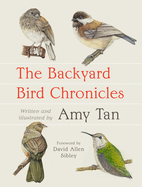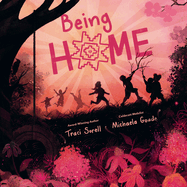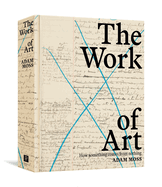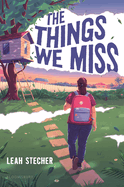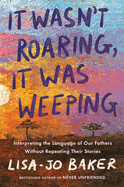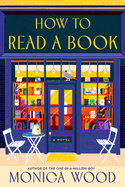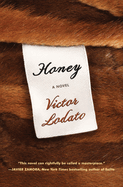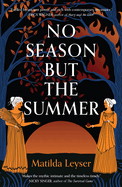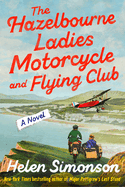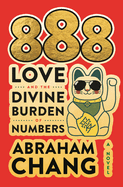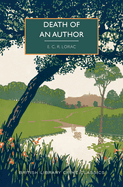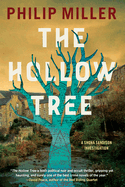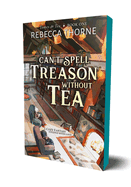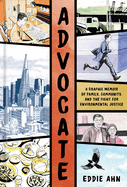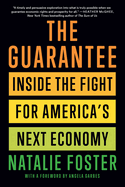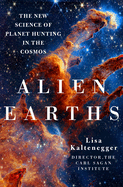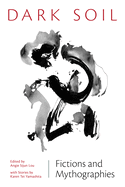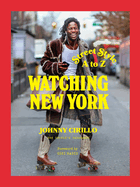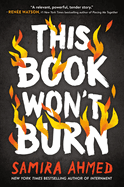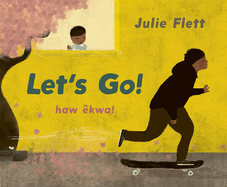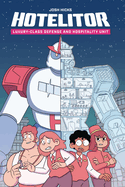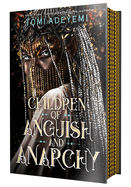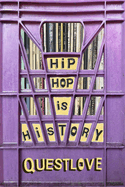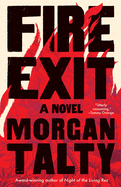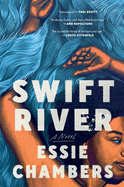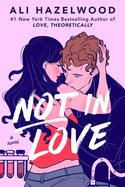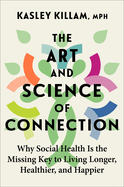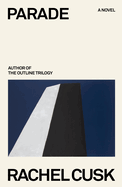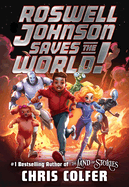Friday, May 10, 2024
Hope can be cultivated in difficult times, and this week, we feature several books that highlight that truth. In The Backyard Bird Chronicles, Amy Tan's years-long birdwatching practice became a "balm" amid the "countless uncertainties" of the Covid-19 pandemic. And in Brother. Do. You. Love Me., a "life-affirming memoir" by Manni Coe and illustrated by Reuben Coe, two brothers reconnected and renewed their loving bond in response to the lockdowns. Meanwhile, for kids, Being Home by Traci Sorell is a "poetic" picture book about "family and finding one's own rhythms," illustrated with "delicate and strong" mixed-media art by Michaela Goade that has "spirited, sparkling colors and a keen sense of motion."
In The Writer's Life, YA authors E.K. Johnston and Meredith Adamo unpack some of the unrealistic expectations imposed on girls in their youth and how they gave their teen characters room to grow.
How to Read a Book
by Monica Wood
Monica Wood's sensitive, beautiful fifth novel, How to Read a Book, explores the unexpected ways literature can draw people together--even (or especially) when they least expect it. Retired English teacher Harriet Larson, known as Bookie to the attendees of the book club she runs at a women's prison, believes in the power of books to change lives but struggles to find selections that will connect with her particular (and persnickety) audience. When club member Violet Powell is released early after serving 22 months for manslaughter, she turns to Harriet for help to find her feet on "the Outs." Bookstore handyman and retired machinist Frank Daigle is wrestling not only with the death of his wife--the woman Violet killed--but also the difficulties in their marriage. Wood's narrative draws these characters together as they face their respective challenges and gradually learn they don't have to do so alone.
Wood (The One-in-a-Million Boy) portrays her characters with warmth and candor: Harriet, deeply compassionate and deeply lonely; Violet, terrified she's not up to the task of building a post-prison life; and Frank, able to fix a book cart or mend a window, but floored by his complicated emotions. Through small interactions, the unlikely trio grows closer. They share meals, book recommendations, and, eventually, the deep truths of their lives. With compassion and honesty about the hard parts of life, Wood moves her characters toward redemption, connection, and even joy. How to Read a Book is a wry, hopeful celebration of literature, unlikely friendships, and the power of small gestures of connection. --Katie Noah Gibson, blogger at Cakes, Tea and Dreams
Discover: Monica Wood's sensitive fifth novel portrays the unlikely book-fueled friendship between a retired teacher, a bookstore handyman, and a young woman recently released from prison.
The Skunks
by Fiona Warnick
Fiona Warnick's debut, The Skunks, is a tender coming-of-age story about a college graduate's return to her sometimes stifling, sometimes comforting hometown. Speared with honest yet generous insights into summer-after-college dilemmas and angst, Warnick's novel captures the tender nostalgia of time spent in the liminal space between adolescence and adulthood.
Isabel can't help but feel a little stuck. Like the baby skunks she recently discovered residing in her backyard, Isabel isn't sure this is the right place for her, but she's still too tied to her youth to know where, exactly, to go next. She gets a series of jobs working at a yoga studio, babysitting, and house-sitting. She's determined to, as her childhood friend Ellie puts it, find a "healthy new direction."
However, Isabel begins to find that life in her hometown does not necessarily mean being stuck. Warnick's patient prose plumbs the depths of Isabel's emotional life while often skimming over the surface of her daily routines. These quotidian details, far from boring, are precise and measured, located in that achingly nostalgic time when people find themselves on the brink of adulthood, but still longing in some elusive ways for the past. Still, it isn't until Isabel's imaginative sections about the lives of the skunks who live alongside her that her conflicting inner desires are laid bare. These gentle meditations on the natural world go beyond a simple metaphor for Isabel's questions of desire and ambition, stagnation and change, however. They probe what it means--what is gained and lost, seen differently or even just seen for the first time--when one remains, for a time, still. --Alice Martin, freelance writer and editor
Discover: A thoughtful and warm-hearted ode to the end of adolescence, Fiona Warnick's The Skunks is a coming-of-age literary gem.
Sipsworth
by Simon Van Booy
Simon Van Booy's Sipsworth is a delightfully funny, poignant, surprising novel about an octogenarian widow who has all but given up when she finds an unusual reason to reinvest in life. The story takes place over two weeks, in private spaces, and features events that on the surface appear small in scale, but have far-ranging consequences and meaning for its human and nonhuman protagonists, with whom readers cannot help but fall in love.
Helen Cartwright had lived abroad for six decades when she returned to the English village in which she was born and raised. Her beloved husband and cherished son have both died, and she now lives alone, sad, reclusive, in a pensioner's cottage. Then one morning, Helen brings in a neighbor's rubbish, to go through it on her own time; something reminded her of her son. She has inadvertently also brought in a tenant: a mouse. On impulse, she begins to feed it, to keep it safe, and they learn to trust one another. Her choice to care for something beyond herself will lead her to leave the house, to interact with people (librarian, hardware storekeeper), and to the terrible realization that if she dies now, the mouse she calls Sipsworth will starve in the enclosure she has designed. "For the first time in many years, against her better judgment," Helen is "not dying."
Van Booy (Father's Day; The Sadness of Beautiful Things) tells Helen's story in unadorned prose that however frequently offers lovely images and metaphor. Sweet but not saccharine, tender, loving, and funny, this story of unlikely friendship and late-life new beginnings will charm any reader who has ever loved or lost. --Julia Kastner, librarian and blogger at pagesofjulia
Discover: A friendship between a widow and a mouse brings outward ripples of positivity in this surprising, compassionate comfort read.
Honey
by Victor Lodato
Honey Fasinga has returned to her New Jersey hometown at age "eighty plus a dash of salt." She wants "to finish things. Make amends." Honey is stylish and smart, and her admission that "[n]ostalgia [is] a lying serpent" doesn't suppress her appetite for life.
As the daughter of a mobster known as the Great Pietro, Honey--born Ilaria Fazzinga--knows where three bodies are buried, including one that's in her nephew's backyard. She left home at 17 but now, with ample funds from a successful career at a high-end Los Angeles auction house, Honey has been drawn back. Her parents have long ago used their "first-class tickets to Hell," but her nephew Corrado's family obligingly welcomes her, especially her grandnephew Michael, who asks her for money and discovers that Honey's wise friendship has much more value. Honey's sophistication and long absence spark resentment from some old friends, notably those jealous of her rekindling a romantic flame and savoring "what we can salvage now, at such a late hour." Although her droll wit eludes her naïve neighbor Jocelyn, their friendship bolsters the young woman and provides some of the novel's funniest dialogue.
It's easy to forget that it's Honey's "late hour," as her unsentimental, glass-half-full (preferably of Viognier) perspective welcomes new experiences while acknowledging inevitable loss. Honey jokes about aging and manifests insights into her late-in-life relationships by regularly revising her will. In Honey, Victor Lodato (Edgar and Lucy) has created an unforgettable octogenarian, her elan and empathy an inspiration. --Cheryl McKeon, Book House of Stuyvesant Plaza, Albany, N.Y.
Discover: A sophisticated and open-minded octogenarian returns to her New Jersey hometown and finds a mixed reception from long-estranged family and friends in this funny, unsentimental novel.
No Season but the Summer
by Matilda Leyser
Matilda Leyser's debut novel, No Season but the Summer, brings the Greek myth of Persephone into modern times. It's an imaginative story of power, voice, and womanhood.
For 9,000 years, Persephone has been seen as a mere object to passed back and forth, rather than her own person. Her mother, Demeter, yearns for her. "I gave her light, warmth, water, nourishment. Why did she not grow towards me?" she reflects. Persephone's husband, Hades, steals her away, her consent questionable at best, to an underworld in want of a queen. Her father, Zeus, decrees that she will split her time between the two in order to spare the world from the destructive effects of her mother's despair. "Every year is shared--spring and summer are my mother's time, autumn and winter are my husband's," Persephone explains. "Nothing left for me. But it was for the best, they said."
As the novel opens, this ancient rhythm is shifting. Persephone crawls upward through cracks in the earth and emerges into a rapidly changing world marked by climate change, angry environmental activists, felled trees, and increasingly obsolete yet still eternal gods. This premise sets Leyser's mythological reworking apart from more conventional retellings: No Season but the Summer is more a continuation of an ancient myth than a true retelling of it. Leyser incorporates the mythology of the past into some of the most pressing narratives of the present, and the result is a brilliant novel that urges readers to think about personhood, motherhood, agency, and the world we shape--for better or for worse--through belief and action. --Kerry McHugh, freelance writer
Discover: This brilliant reworking of the Greek myth of Persephone explores agency, power, and personhood in a contemporary world marked by climate change.
The Hazelbourne Ladies Motorcycle and Flying Club
by Helen Simonson
The summertime beach resort setting could not be more dazzling for Helen Simonson's marvelous third novel, The Hazelbourne Ladies Motorcycle and Flying Club, a historical drama navigating topics of class and women's rights in England after World War I. Strong on comic relief, the plot unfolds for the most part at the perfectly respectable, if not top of the line, Meredith Hotel in the British seaside town of Hazelbourne on the eve of Armistice celebrations. Here, Simonson summons an impressive and entertaining cast of trousers-wearing female motorcyclists, snooty aristocrats, one particularly pompous American, and, at the center of it all, a young woman from a farming family struggling to define the next phase of her life.
During the war Constance Haverhill managed her benefactor Lady Mercer's estate, but now the job will go to a returning veteran. She'll have to find employment and a new home soon, but in the meantime, she'll serve as a companion to Mrs. Fog, Lady Mercer's mother, as she recovers from influenza at the Meredith. Constance is soon befriended by the delightfully unconventional Poppy Wirrall, owner of a motorcycle club and a women's taxi service made up of former female "despatch riders." Poppy's glamorous mother lives at the hotel, while her handsome but prickly brother, Harris, an aviator, struggles to reclaim his independence after losing a leg in the war.
Simonson (The Summer Before the War) expertly probes cultural tensions hindering her characters' efforts at post-war reinvention, including the immense human cost of combat, the hypocrisy of letting women work during wartime but not afterward, and class differences that place Constance at a steep societal disadvantage. --Shahina Piyarali
Discover: A delightful historical drama set in a British seaside town and starring an impressive cast of trousers-wearing female motorcyclists seeking to rebuild their lives after World War I.
888 Love and the Divine Burden of Numbers
by Abraham Chang
Abraham Chang has worked in publishing for years, so it's no shock that 888 Love and the Divine Burden of Numbers, his debut novel, displays a confidence more common among established authors. The only question at this point is just how many people will fall in love with Young Wang and his search for perfection--in numbers and in life.
Set in the mid-to-late '90s, this book is a quiet riot of pop-culture references, full of song titles and movie moments, AOL and pager code. Young is a film nerd who regularly dreams of revered directors offering advice, and his love for his New York City home is enriched by his Chinese heritage. The structure and pacing bounce between Young's second year at New York University and the flashback sections focused on his first five loves. Each cinematic segment gets every detail just right.
Besides the delightful barrage of '90s nerdery, the other thread that ties Chang's work together is Young's insistence on the importance of numbers, some good and others terrifying. Young's uncle Su Su believes "we only get seven great loves in life," so when he falls for Erena (his number six), he is forced to question his faith in the numbers. Could she be his 888 love--"The most magical of numbers.... The triple A, top grade, best of the best. Infinity upon infinity upon infinity"--or is number seven out there waiting for him?
Perfect for GenX readers or younger fans of such classics as Ready Player One, this coming-of-age story is thoroughly fresh while touching something universal, that tender reminder of the power of love. --Sara Beth West, freelance reviewer and librarian
Discover: A spot-on dive into 1990s New York and the struggles of finding out who you are meant to be and all the ways you might be meant to love, Abraham Chang's debut is hilarious and sweet, a pure delight.
Mystery & Thriller
Death of an Author
by E.C.R. Lorac
Death of an Author, a mystery novel by a woman who used the gender-ambiguous pen name E.C.R. Lorac, centers on a mystery novelist who may or may not be a woman. First published in 1935 and revived here by the invaluable British Library Crime Classics series, this missing-person mystery should be admired for both its protofeminist layers of provocation and the puzzle at its heart.
As Death of an Author begins, celebrity novelist Michael Ashe is telling his publisher that he wants to be introduced to a successful thriller writer in the publisher's stable: the reclusive--and presumed male--Vivian Lestrange. Lestrange agrees to meet with Ashe and their publisher on the condition that no one reveals that she's actually female. Three months after this meeting, a woman arrives at the Hampstead Police Station to say that she's Lestrange's secretary and that Lestrange has gone missing. Or are the woman and Lestrange the same person, as one detective suspects?
Lorac (1894-1958) has scads of fun with gender teases (there's a running conversation about whether one can tell a man's writing from a woman's) and with the book's meta chatter about the merits of crime novels and their authors (two characters make disparaging remarks about "thriller merchants"). Lorac also clearly delights in her odd-couple detectives. While Chief Inspector Warner finds Inspector Bond's ready skepticism dispiriting, Bond doesn't appreciate Warner's "flights of fancy." Qualifying as such a flight is perhaps a first from a crime novel detective: Warner's spontaneous recitation of a homespun limerick. --Nell Beram, author and freelance writer
Discover: Originally published in 1935, this missing-person mystery should be admired for both its protofeminist layers of provocation and the puzzle at its heart.
The Hollow Tree
by Philip Miller
Investigative journalist Shona Sandison has never considered journalism just a job. Instead, she sees it as a mission that satisfies her soul, as Philip Miller (The Goldenacre) explores in the complex The Hollow Tree.
It's been six months since Shona accepted a severance package from the Edinburgh Post, and though she has carved out a few regular freelance projects, she's running out of ideas to pitch. Shona also misses the camaraderie of the newsroom, so she looks forward to attending the wedding of Vivienne Banks, the Post's longtime editorial secretary, where she plans to catch up with many of her former colleagues. The trip is some distance, requiring her to make extensive arrangements at home.
The night before the wedding, Shona witnesses fellow guest Daniel Merrygill walk off the roof of the Poet's Hotel. The festivities are put on hold, but one of Shona's editors, sensing a sensational feature, wants a story with her personal spin and convinces her to dig deeper. As Shona works the story, she uncovers connections to both Gary Watson, a member of Parliament, and Vivienne's brother, who went missing 30 years earlier.
The Hollow Tree works as an intense novel about ethical journalism as Shona wades through decades of secrets in an insular small town and alienates Vivienne, who doesn't want her brother's case dredged up. A subplot involving Scottish politics can be a bit dense at times, but Miller keeps the action strong. Daniel's suicide provokes further violence, and Miller delves into darker themes of friendship. In his second novel about Shona, Miller has created a gripping, cerebral tartan noir thriller. --Oline H. Cogdill, freelance reviewer
Discover: A Scottish journalist pursues a story that leads to a member of Parliament and decades-old secrets among old friends in this strong, cerebral tartan noir thriller.
Science Fiction & Fantasy
The Accidental Medium
by Tracy Whitwell
In The Accidental Medium, British author Tracy Whitwell launches the first in a hilariously clever paranormal cozy mystery series.
Readers will be enraptured by the freewheeling narrative voice of Tanz, a struggling, 38-year-old British actress waiting for her next big role. Neurotic and self-deprecating, Tanz is going through a rough patch. She's grieving the loss of an unrequited love, a 32-year-old male friend who died in a car crash--and whose ghost keeps appearing in her dreams. Tanz has also become a "borderline alcoholic" who indulges in "buckets of Merlot," and she's "addicted to old-school horror films and magazines about murderers." Such behaviors were exacerbated when "the complete bastard [she] used to love moved out and left [her] with a huge rent to find."
When Tanz takes an interim job at the Mystery Pot, a local New Age shop with tarot card readings, she fears she's plunged into a world of "nutters." Then more ghosts suddenly start appearing, enabling Tanz to make predictions about peoples' futures, and she reluctantly begins to utilize her new clairvoyant skills. Her life takes a dramatic turn when she's visited by a murder victim who enlists Tanz's help in identifying her killer and bringing the perpetrator to justice.
The sharp-tongued, street-smart ingenuity of Whitwell's lovable heroine, along with tight plotting and a cast of offbeat characters, makes for a wildly fun, bright-as-lightning start to a crafty series. --Kathleen Gerard, blogger at Reading Between the Lines
Discover: A struggling British actress starts seeing ghosts who enlist her crime-solving help in the clever, comical first book of a paranormal mystery series.
Romance
Can't Spell Treason Without Tea
by Rebecca Thorne
Rebecca Thorne's Can't Spell Treason Without Tea marks an exciting new entry in the cozy fantasy genre. Reyna is one of the queen's guards, descended from a long line of palace guards who protect their sovereign with honor. But the queen's bent toward cruelty and wickedness have worn thin on Reyna's sense of duty, and she longs for a quieter life in the country with her girlfriend, Kianthe. "You like tea. I like books. Let's open a shop somewhere remote and forget the world exists," begs Kianthe, who just so happens to be the Arcandor, designated by the Stone of Seeing as a conduit, "channeling its immense magic into smaller spells that benefited the world at large." Simply put, neither can run off and leave their lives behind--until one day, Reyna does exactly that, and Kianthe decides to join her.
The pair end up settling in a far-off town where they open New Leaf Tomes and Tea. But the outside world continues to intrude on their dream. The adventure (evil queens, inexplicable dragon attacks, politically minded mages) of Can't Spell Treason Without Tea is tempered by the inherently cozy setting of their shop, filled with magical plants, walls of books, the scent of scones, and the quiet sounds of tea preparation. With a planned sequel in the works, Can't Spell Treason Without Tea is sure to appeal to fans of Travis Baldree's Legends and Lattes, as well as any fantasy lover keen to imagine the inner lives of adventurers, whether they be actively adventuring or sitting at home with a book and a nice cup of tea. --Kerry McHugh, freelance writer
Discover: An exciting new voice in the cozy fantasy genre, as a Queensguard and a mage attempt to build a quiet life far from adventure and run a tea and bookshop together.
Graphic Books
Advocate: A Graphic Memoir of Family, Community, and the Fight for Environmental Justice
by Eddie Ahn
In his courageous debut graphic memoir, Advocate, environmental justice lawyer Eddie Ahn recounts the nonprofit work he has accomplished, as well as his experiences with racism and contending with his immigrant parents' hopes.
Ahn's Korean parents pursued graduate degrees in Texas, where he was born. He grew up helping out in the family's liquor store and, after college, moved to the San Francisco Bay Area as an AmeriCorps teacher. Later, he attended law school and became a nonprofit attorney and the executive director of Brightline Defense, an environmental advocacy group. In this capacity and through roles on local commissions, Ahn influenced clean energy policies. He was also able to impact people's daily lives by delivering food during the Covid-19 lockdowns and installing air quality sensors during California's wildfires in the summer of 2020.
Ahn has a humble, self-deprecating attitude. He relates multiple setbacks such as regrettable sublets, a poker habit, eye surgery, transportation troubles, and racist microaggressions. "I never much believed in hero-driven narratives," Ahn writes, portraying himself as part of a hardworking team. It takes "a quiet kind of grit to carry on, day after day," he acknowledges, particularly when money was so tight, he subsisted on takeout burritos. Indeed, one moving narrative thread follows Ahn's family relationships, especially with his father, who saw material wealth as a mark of success. Gradually, Ahn convinced his parents that public service is its own reward.
Ahn's photorealistic style and monochromatic spreads suit his forthright, chronological storytelling. This memoir is intrepid and revealing about family inheritance and several aspects of social justice: race, money, and the environment. --Rebecca Foster, freelance reviewer, proofreader and blogger at Bookish Beck
Discover: This courageous graphic memoir depicts Eddie Ahn's Korean American family history and nonprofit environmental justice work.
Biography & Memoir
brother. do. you. love. me.
by Manni Coe, illus. by Reuben Coe
A text message changes the lives of two British-born brothers in the inspirational, life-affirming brother. do. you. love. me., a beautifully written memoir by Manni Coe and illustrated by his brother, Reuben Coe, who has Down syndrome.
At the height of the Covid pandemic, 40-something Manni--one of four brothers and a travel guide working in Spain and living with his life partner--received a distressing five-word text from his 38-year-old brother Reuben: "brother. do. you. love. me." Reuben, learning disabled and living in a British care home, had become severely depressed and diminished. He'd stopped eating and had lost weight. Manni interpreted the text as a cry for help. He responded by renting a cottage in the English countryside and inviting Reuben to live with him, determined to nurse him back to health and restore his quality of life.
Initially, Reuben was so withdrawn and nonverbal that he would communicate only via drawings--felt-tip illustrations and poems that conveyed his passions for contemporary songs, movies, and the theater. These fun imaginings become glowing accompaniments to a tenderly drawn narrative that gracefully probes issues of isolation and loneliness; sacrifice and trust; and the loving, enduring bonds of memory and family.
Covid proved sad and challenging for many. But through the experiences of the Coe brothers--how they reconnected and deepened their relationship, sharing 26 weeks of their lives together--readers will bask in silver linings that brought happy endings to the brothers' hard times. --Kathleen Gerard, blogger at Reading Between the Lines
Discover: This inspirational, life-affirming memoir details how two adult British brothers--one with Down syndrome--lovingly bonded during Covid.
It Wasn't Roaring, It Was Weeping: Interpreting the Language of Our Fathers Without Repeating Their Stories
by Lisa-Jo Baker
In her powerfully vulnerable fifth book, It Wasn't Roaring, It Was Weeping, Lisa-Jo Baker shares her experience of growing up as a white person in South Africa under apartheid, and her slow, transformative journey to understanding racial injustice and generational trauma. Baker (The Middle Matters) explores her deep love of her homeland, her grief at her mother's death shortly after her 18th birthday, and her struggle to tame the anger she inherited from her father.
Baker's narrative moves through vivid descriptions of South Africa: purple-flowered jacaranda trees and horseback rides across the grassy veld. She writes of English teatime on her family's farm, linking that ceremony to the country's history of Dutch and English colonialism. Baker acknowledges her family's complicity in South Africa's history of racial violence, including their treatment of Black workers on their farm. Having studied human rights and politics at universities in the U.S., she attends some of the South African Truth and Reconciliation Commission hearings. At the same time, she works to honor and heal her complicated relationship with her physician father. Alongside his warm affection for his children lived a simmering rage, and Baker highlights both aspects of their relationship and her struggle to forge a different path with her children. As she recognizes her country's racial sins and joins the work of reparation, Baker does the same with her father and her own children, leading to a renewed faith in God and in the possibility of redemption.
Baker's compassionate memoir offers a sincere, perceptive portrait of apartheid and a ray of hope for anyone who feels trapped in a toxic cycle. --Katie Noah Gibson, blogger at Cakes, Tea and Dreams
Discover: Lisa-Jo Baker's powerfully vulnerable memoir shares her experience of growing up as a white person under South African apartheid and her struggle to heal her relationship with her father.
Political Science
The Guarantee: Inside the Fight for America's Next Economy
by Natalie Foster
The Guarantee: Inside the Fight for America's Next Economy asks readers to consider what true freedom might look like. Through many diverse interviews, Natalie Foster, president and cofounder of the Economic Security Project, investigates how social and financial guarantees were implemented in the United States between 2011 and 2022. She also touches on social programs of the past and the ways society has changed over time.
Foster explores numerous programs, including universal basic income (UBI) test groups in places such as Stockton, Calif., and the impact of the federal Covid-19 relief programs on the poorest Americans. She makes a strong case for guarantees in American life. Such guarantees would increase innovation, for instance: the U.S. could quadruple its rate of innovation if everyone innovated at the rate that wealthy white men do. Participants in Stockton's $500 monthly UBI test were more likely to have moved from part-time to full-time jobs--not less. They were able to spend more joyful time with their families; one parent indicated that "she was able to read bedtime stories to her children." Babies in poor families that received $333 per month for a year even showed more high-frequency brain activity.
Throughout The Guarantee, Foster cites many different case studies and expert opinions. She debunks common oppositional talking points with facts and figures while keeping the text engaging and interesting. As technological developments continue to impact the lives of working people, The Guarantee is an especially important book. --Alyssa Parssinen, freelance reviewer and former bookseller
Discover: The Guarantee cites real-life examples to demonstrate that it's not only possible but also necessary to provide American families with a guaranteed standard of living.
Science
Alien Earths: The New Science of Planet Hunting in the Cosmos
by Lisa Kaltenegger
Looking for life on other planets requires understanding what such life might look like. As astrophysicist Lisa Kaltenegger, the founding director of Cornell University's Carl Sagan Institute, demonstrates in Alien Earths: The New Science of Planet Hunting in the Cosmos, it also requires understanding numerous scientific disciplines, including biology, geology, astronomy, and engineering. Kaltenegger narrates the story of cosmic development and her journey toward the exploration of a universe vaster than the mind can comprehend, yet more intimate than readers may realize. She helps readers grapple with impossible concepts, such as highlighting how long Earth existed before humans appeared, by comparing the planet's timeline to a single 24-hour day. Descriptions of her surroundings ground readers on Earth while they consider the possibility of other life-supporting planets.
Kaltenegger balances authoritative expertise and childlike enthusiasm, relating scientific discoveries along with the human connections that led to them. Anecdotes about traveling on a student's budget and bringing her daughter to a satellite launch enrich stories about pivotal encounters with colleagues. Kaltenegger challenges the misconception of scientific research as "stuffy and rigid" through tongue-in-cheek comments, as when she compares the Big Bang to the baking of raisin bread, but contends that "the Big Raisin Bread Expansion is probably not as catchy a name as the Big Bang." And Kaltenegger invites readers into her research experience as she reflects on "every dreamer who had ever looked up at the stars and wondered--it had taken all of us to get here." Alien Earths is an absorbing read that imparts knowledge, cultivates appreciation for scientific inquiry, and inspires wonder and delight. --Dainy Bernstein, freelance reviewer
Discover: With authoritative expertise and childlike enthusiasm, astrophysicist Lisa Kaltenegger's Alien Earths looks to deep space as well as Earth's past and present for clues to life-supporting planets.
Nature & Environment
The Backyard Bird Chronicles
by Amy Tan
Create a Venn diagram of "bird nerds" and "word nerds," and the result will be close to a single circle. People who read are very often people who love birds, and The Backyard Bird Chronicles is custom-made for them, with evocative illustrations and lively narratives from celebrated writer Amy Tan (The Joy Luck Club, The Valley of Amazement). A foreword by ornithologist David Allen Sibley calls the book "a collection of delightfully quirky, thoughtful, and personal observations of birds in sketches and words." Tan's skill in accurately representing her subjects is undeniable, but she is quick to distinguish her art from that found in a field guide: "They are not illustrations of species of birds. They are portraits of individuals who looked at me whenever I looked at them, who acknowledged and accepted me as part of their world."
Tan's jottings span from 2017 through 2022, including 2020's Covid-19 lockdown. She reflects on the countless uncertainties of that time: "Almost everything seems like a potential transmitter of disease and death--the groceries, a doorknob, another person. But not the birds. The birds are balm." While readers may feel those particular threats have waned, The Backyard Bird Chronicles will still be a comfort, full of inspiration and encouragement to do as Tan does with her drawings, "to wonder in depth, to notice, to question." Tan's curiosity extends endlessly, so questions abound; some are answerable, others unknowable, but all point readers to a type of attention many long to capture for themselves. Put this book in their hands. It will be loved. --Sara Beth West, freelance reviewer and librarian
Discover: People who read are very often people who love birds, and The Backyard Bird Chronicles is custom-made for them, with evocative illustrations and lively narratives from celebrated writer Amy Tan.
Reference & Writing
Dark Soil: Fictions and Mythographies
by Angie Sijun Lou and Karen Tei Yamashita, editors
A stunning blend of "history, biography, geography, and mythmaking," Dark Soil: Fictions and Mythographies is a complex experimental anthology that encourages readers to consider their relationships to space anew, through both uncovering and reimagining. Curated and edited by Angie Sijun Lou, the book presents 10 short stories by National Book Award finalist Karen Tei Yamashita (I Hotel), followed by pieces from eight other writers that include essays and lyric poetry.
Yamashita's tales, collected in the first part of the book under the title "Santa Cruz Nori," explore hidden landmarks of Santa Cruz, Calif. These stories bear witness to obscured versions of the same place, seen through the eyes of people often marginalized or objectified by history. She allows her characters to reclaim spaces they may have been erased from. The fictions at times border on the surreal or the fantastical, but in doing so, cast a different light on places people think they know well.
The curated essays and other works in the second part of the collection echo and mirror this process, with each author diving deep into a particular space that they felt especially connected to, as Saretta Morgan does with the Buenos Aires National Wildlife Refuge in Arizona. These pieces urge readers to reexamine their relationships to places, to history, to how humans document or consider what qualities about a space serves its ongoing importance. As a result, Lou's unifying goal shines through: Dark Soil serves as "a field guide for understanding our future and its terrain of struggle" that ultimately reconfigures how readers might see themselves in the contexts of the places they pass through. --Michelle Anya Anjirbag, freelance reviewer
Discover: A stunning anthology uses the strength of story, both fiction and nonfiction, to address missing histories and revive narratives that have too often been omitted.
Art & Photography
The Work of Art: How Something Comes from Nothing
by Adam Moss
In the acknowledgements for The Work of Art: How Something Comes from Nothing, Adam Moss explains his early vision for the book as an "interactive museum of creativity, with exhibits and wall text and talk wafting through its corridors." Very much a museum, the book shows how ideas can be taken from seed to fruition, a skill Moss honed as the editor of New York magazine. Readers will linger in these galleries as they consider the ideas of more than 40 creatives working in art forms that include sculpting, painting, cooking, writing, and even building sand castles. The artists represented here are an extraordinary group, with such luminaries as Louise Glück, Kara Walker, Stephen Sondheim, and Ira Glass.
Visitors to Moss's museum will delight in its visual styling, with every detail--font, layout, design, color--governed by a spare but finely appointed aesthetic. The artifacts that accompany each section prove fascinating. Some are saturated, like prints from photographer Gregory Crewdson, while others are plain but chaotic, like the idea sketches offered by cartoonist Roz Chast.
Moss strikes the perfect balance with his tone: breezy and conversational but driven by intellectual curiosity. And while there is plenty here about talent and genius and faith and flow, what it comes down to is this: "No meaning, no magic, just the work of it: The work of art." Throughout The Work of Art, Moss chases the origin and evolution of creativity, a lofty but highly practical goal, especially to emerging creatives looking for inspiration. He may not solve that elusive puzzle, but readers will love the treasure trove of wisdom he uncovers. --Sara Beth West, freelance reviewer and librarian
Discover: Imagine a dinner party attended by such greats as George Saunders and Samin Nosrat, Gay Talese and Tony Kushner, Twyla Tharp and Sofia Coppola. Wish you could go too? Read The Work of Art.
Watching New York: Street Style A to Z
by Johnny Cirillo
Known as the "people's paparazzi," photographer Johnny Cirillo's Instagram and TikTok accounts are well loved for their candid shots of New Yorkers' creative, eye-catching, and one-of-a-kind street style. Born in Queens, N.Y., Cirillo started his Watching New York series as a summer passion project. He continued to share photos of interesting outfits and accessories, eventually gaining millions of social media followers and developing as an authority in fashion. Watching New York: Street Style A to Z moves Cirillo's work from social media to print, and presents new and old photos that express the authenticity of the city.
A foreword by fashion model Gigi Hadid conveys the book's cultural importance. Cirillo "has given the world outside of NYC the chance to experience just what makes it magical," Hadid writes. Each arresting page introduces readers to stylish people in one of the fashion world's capital cities. Cirillo's work is noteworthy for his ability to capture fashion and the essence of the people wearing it. When he asks each subject for permission to use their portrait, he follows up with other questions. Many photographs are accompanied by anecdotes, quotations, or short interviews that highlight the wearer's style and personality, enabling readers to experience what Cirillo describes as "therapeutic": moments of connection with strangers that prompt the thought, "Maybe we're all going through this together."
Watching New York includes beautiful full-page images and multi-image spreads. The photos are organized alphabetically, beginning with "accessories" and "all in black" and ending with "zebra and other animal prints." It's an imaginatively curated and inspiring collection that sheds light on original fashion looks and the individuality of New York City street style. --Clara Newton, freelance reviewer
Discover: Photographer Johnny Cirillo showcases New York's most captivating street-style looks by capturing colorful outfits and celebrating creative minds.
Children's & Young Adult
Being Home
by Traci Sorell, illus. by Michaela Goade
Family and finding one's own rhythms lie at the heart of this striking new picture book by two-time Sibert Medal honoree Traci Sorell (Mascot) and Caldecott Medalist Michaela Goade (We Are Water Protectors). The collaboration, much like its dynamic characters, moves with a compelling, powerful beat.
A Cherokee child lives with their etsi (mother) in a city where "cars rush" and "crowds collect." Etsi says this is not their rhythm, so they are moving to the Cherokee Nation Reservation. The pair are excited to be leaving a place where, as more houses are built, "fewer animal relatives visit" and "family is too far away." The exuberant child and Etsi pack up the car and head home. The drive is long, but the destination promises to be sweet--the child finds animal relatives, a new swing, and plenty of wonders to explore on their ancestral land. The child and Etsi are "close enough to gather, eat,/ laugh, dance, and share" with their people--the wonderful "rhythm of being home."
Sorell's poetic text focuses on the deeply felt reasons that drive the child and their etsi's move from city to reservation. The author beautifully expresses core themes of family and the importance of full self-realization on ancestral land; in doing so, she echoes the oh-so-important rhythms which animate her characters. Goade's mixed-media art is at once delicate and strong, with spirited, sparkling colors and a keen sense of motion that reinforces the text's rhythm and energy. Alive with movement, Being Home is an exceptional offering, emphasizing the inherent rhythms and motions of life. --Lynn Becker, reviewer, blogger, and children's book author
Discover: Family and finding one's own rhythms lie at the heart of Being Home, a glorious picture book which, much like its dynamic characters, moves to a strong beat.
The Things We Miss
by Leah Stecher
The Things We Miss is an evocative, affecting time-travel novel that vividly confronts the struggles of grief.
J.P. is a "generally oversized" girl who is grieving her father's death and her grandfather's cancer diagnosis. She wishes she could just "jump ahead to some future when [she] was less awkward and more confident." After a particularly trying first day of seventh grade, J.P. gets that opportunity when she finds a new door in her neighbor's treehouse. She walks through and magically time-jumps "seventy-two-hours-ish" into the future without anybody realizing. It's exciting at first, but when J.P. starts taking a "mental vacation" too frequently, and misses important events, she has to decide whether skipping the pain is worth skipping life.
Leah Stecher effectively uses time travel to insightfully examine depression in her debut middle-grade novel. She shows J.P. battling body dysmorphia, inadequacy, and low self-esteem with escapism and avoidance. J.P.'s anxiety, self-consciousness, and insecurity emanates from the page ("Was he mad about the door? Mad at his parents? Mad at me? Jealous?"), providing support for why time-jumping feels like J.P.'s only option. There aren't many bright spots in J.P.'s life, but her relationship with her live-in grandfather shines. Whether he's proudly wearing a pink butterfly knitted hat she gifted him to chemotherapy or "wringing the most emotion possible out of every moment of life," Pop Pop is J.P.'s anchor. This thoughtful, heart-wrenching speculative novel is a poignant reminder that life has "lots of uphills so you can enjoy the downhills afterwards." --Lana Barnes, freelance reviewer and proofreader
Discover: Seventh-grader J.P. discovers a time-travel door that lets her skip three days into the future in this evocative, affecting novel that vividly confronts the struggles of grief.
This Book Won't Burn
by Samira Ahmed
This Book Won't Burn by Samira Ahmed (Internment) is an inspiring YA novel that celebrates the power of books as it follows a desi Muslim teen who speaks out against censorship.
Eighteen-year-old Indian American Noor Khan is shocked by the empty shelves in her new school's library and enraged when she learns nearly 500 queer and BIPOC books have been pulled for "review" due to "obscene" content. Noor, furious, exploits school-rule loopholes to protest: she wears a shirt that says, "I read banned books," reads aloud from prohibited titles during off-campus lunch, and erects "fREADom libraries" around town. In response, the local chapter of "Liberty Moms and Dads," a group that "basically control[s]" the school board, vows to stand against "groomers and the woke agenda," while Islamophobic, racist, and fascist vitriol from incensed community members bespeaks violence. Noor, together with a small group of friends, scrambles to defend herself with what she knows best: the power of words.
Noor faces an onslaught of hate, such as a principal who calls queer books "pornographic" and a police captain who suggests a swastika painted on Noor's garage isn't a hate crime because she's Muslim. Ahmed infuses this eye-opening story with excerpts from her own peers' banned books, including Mark Oshiro's Anger Is a Gift and Jason Reynolds and Brendan Kiely's All American Boys, to support the idea that "seeing yourself in a book can sometimes save you." Also featured are a heroic librarian, a fierce Indian mom, and the confusion of teen attraction. Through it all, Noor stands by her belief that book bans serve only to "keep us ignorant... [and] easier to control." Incendiary. --Samantha Zaboski, freelance editor and reviewer
Discover: A Muslim teen fights against a policy that has removed hundreds of diverse books from the school library in this inspiring and powerful YA novel.
Let's Go!
by Julie Flett
A child who yearns to take up skateboarding feels "a part of something" when they learn how to ride in Julie Flett's Let's Go!, which joyously celebrates the sport and its community. The tentative child watches from the window as skateboarders fly down the sidewalk: "Cacussh!" At the park, the kid's imagination goes into overdrive while pretending to skate. When the child's mother shares the board she skated on as a kid, the eager athlete diligently practices. Despite all the practice, the child continues to merely watch at the skateboard park--until new friends bolster the boarder's confidence enough that they all eventually "skate down the street, like a little river, together."
Flett (We All Play) imbues this story with a satisfying kineticism, coupling the refrain "haw ȇkwa! Let's go!" with not only the child's eagerness to learn but also the vigor of the skaters they see. Cree-Métis Flett (who explains in the book's backmatter that "haw ȇkwa!" is a Cree idiom that captures the "creative urgency" of skating) depicts the experienced skaters surrounded by highly textured waves of action, capturing their symphony of movements. The pastel, pencil, and digital illustrations have a subdued palette, but pops of crimson, lavender, green, and sunny yellows accentuate the pages. A closing note addressed to readers explains how the skating her own son did inspired Flett's dynamic and energetic tale. --Julie Danielson, reviewer
Discover: Julie Flett's dynamic and energetic Let's Go! celebrates skateboarding and its tightly knit community.
Hotelitor: Luxury-Class Defense and Hospitality Unit
by Josh Hicks, illus. by Josh Hicks
Welsh cartoonist and filmmaker Josh Hicks (Glorious Wrestling Alliance) sends readers on a galactic adventure in his science-fiction graphic novel about a luxury hotel that also happens to be a robotic defense system and spacecraft.
Eighteen-year-old Anna Greene is experiencing her first taste of employment as an intern on the Hotelitor when she and several other entry-level colleagues are forced to fend off an attack from an 80-foot space alien without help from the absent bridge crew. The untrained heroes manage to eliminate the foe but accidentally send Hotelitor blasting into space. As the days (and weeks) pass, the people stranded aboard begin to divide up--the wealthy take over the best spaces and hoard food while the resort's four-armed, green-skinned musician, Klak, becomes a cult leader among the disenfranchised. Anna's supervisor, Graham Smough, explains it simply: "inside this giant robot hotel, we have our own little society. And a society simply cannot function if everyone is equal." Anna and her colleagues must figure out a way to get home, or the problems brewing inside the hotel could mean an unpleasant end for everyone.
On the surface Hotelier is a funny, futuristic caper that moves at warp speed. The deeper the reader goes, though, the more they will find: discussions of class, environment, technology, ambition, greed. The art evokes a clean, classic comic style with minimal detail and exaggerated features that work together to draw attention to the most vital elements in each frame. Hicks blends humor and culture with his art to create a thought-provoking, zany escapade through the outer reaches of space. --Jen Forbus, freelancer
Discover: A futuristic hotel that doubles as a space-traveling defense system blasts readers into a realm of rollicking, heart-racing adventure.
Coming Soon
The Writer's Life
E.K. Johnston and Meredith Adamo: Just Like Other Girls
 |
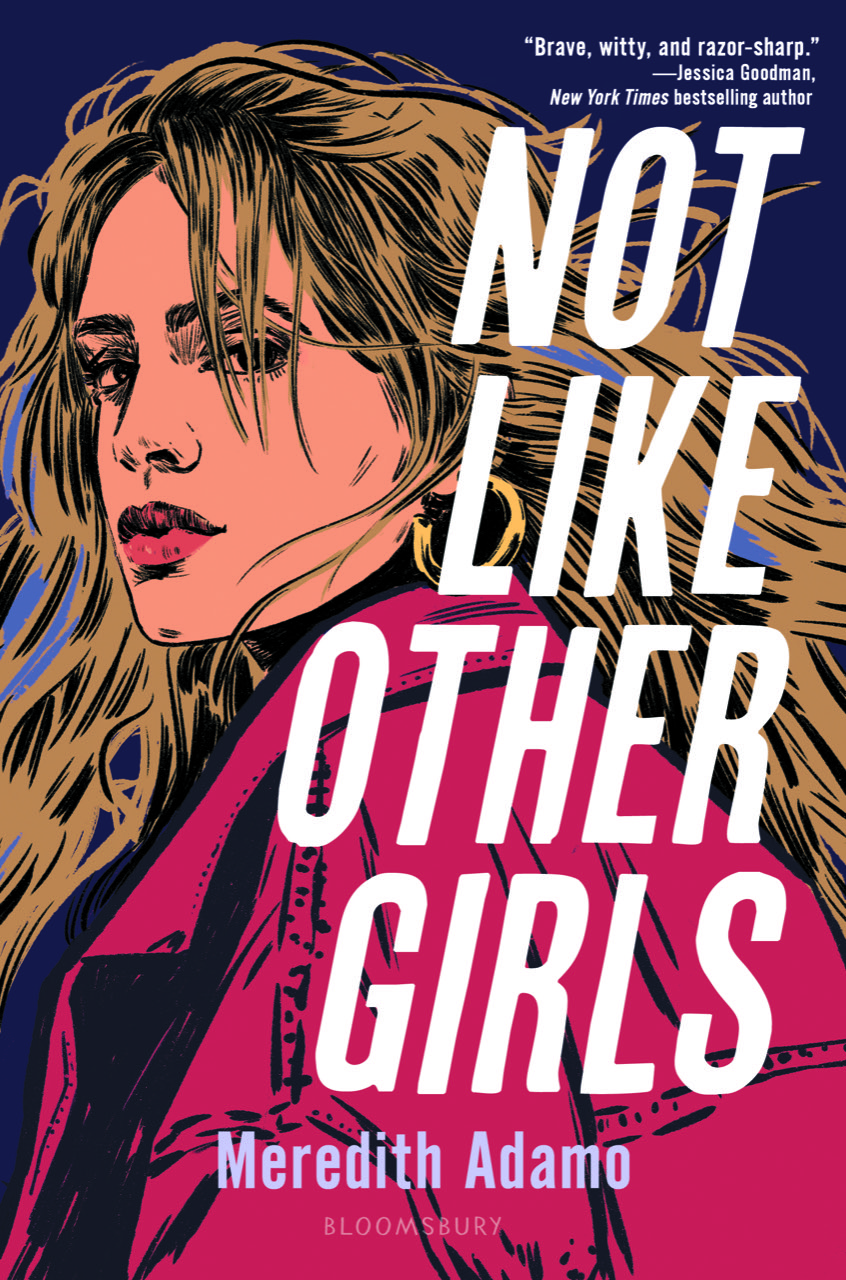 |
E.K. Johnston is the bestselling author of several YA novels including A Thousand Nights, which was shortlisted for the Governor General's Award. Pretty Furious (Dutton Books for Young Readers) is a "spiritual sequel" to her YA feminist title Exit, Pursued by a Bear.
Meredith Adamo is a YA author based in hot, humid North Carolina, but she's originally from Rochester, N.Y., which is her favorite place on the planet. Not Like Other Girls (Bloomsbury YA) is her debut novel and an Indie Next List pick.
Here, Johnston and Adamo discuss the "not like other girls" and "good girl" tropes, writing feminist novels for teens, and the fun coincidence that both their books feature prominent characters named Maddie.
E.K. Johnston: Okay, so first things first! What drew you to write "girl culture" as a thriller?
Meredith Adamo: I don't know if I knew when I first started drafting how strong of a theme it would end up being. I've always loved the teen sleuth genre, so I wanted to write the kind of mysteries I'd grown up reading. I also thought it'd be fun to play with the "not like other girls" trope because it's so contentious. But the way the threads ended up coming together through the main character Jo's emotional arc only started to become clear to me during my (endless) revisions.
I love how you delve into the "good girl" trope. What led you there?
Johnston: I had the idea a while ago, and I honestly don't remember how. I think I had some leftover feelings, not just from writing Exit, Pursued by a Bear but from how people responded to Exit. It's kind of a piecemeal book: my friends from high school, my anger, the forest in summer, and the idea that it takes so little to wreck a reputation. I wanted to write about girls who know there's something else out there and want to be better at fighting for it. And then I was like, "White privilege, the ultimate weapon."
Adamo: I love how the girls are allowed to feel their anger; one of the refrains that stood out to me across the narrations is them saying, "Well, I'm a good girl." And it's such a meaningful way to flip that role on its head, especially as the girls realize that people in their community overlook them, but also try to protect them when they're not asking for it--especially at the expense of others.
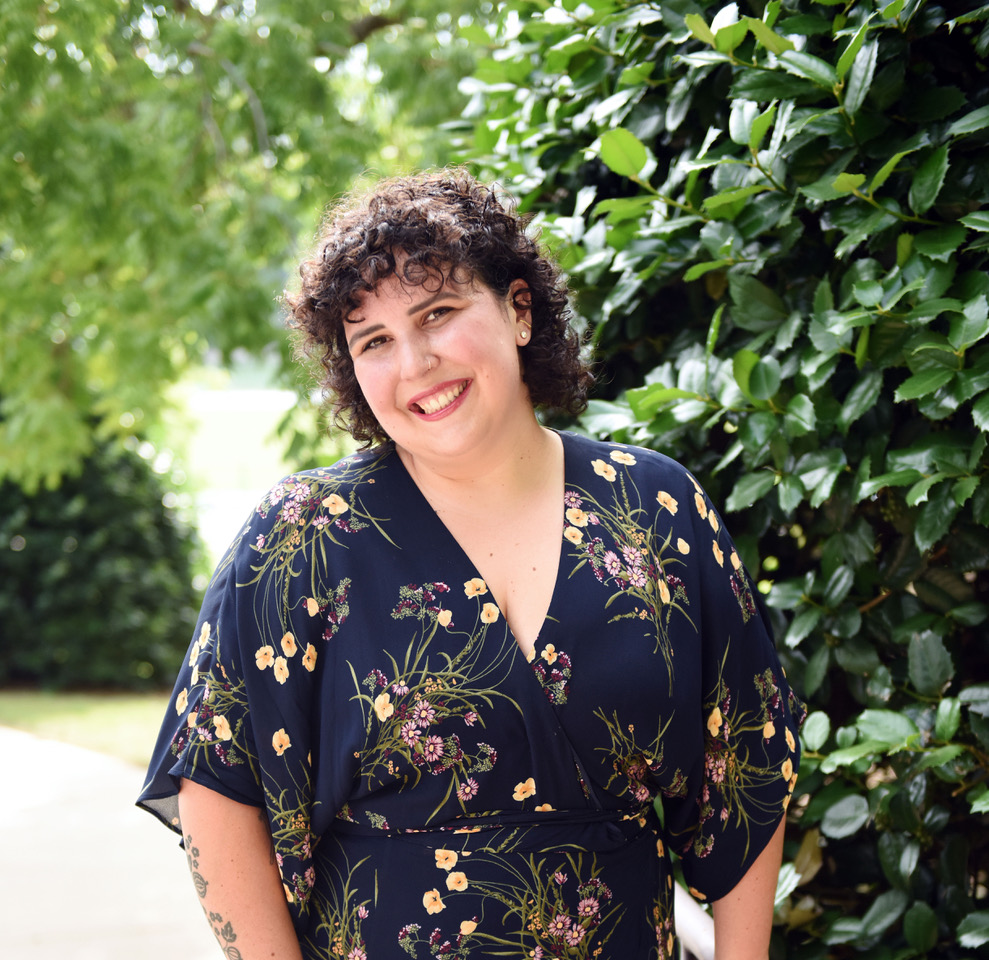 |
|
| Meredith Adamo (photo: Amanda Padbury) |
|
Johnston: Exactly! I'm a crier, and so I have to be careful not to let "white woman tears" cause damage. I wanted to explore what happened when the girls weaponized themselves rather than being used as weapons. Is there a particular weapon Jo uses in your book that you were surprised by?
Adamo: Often when I talk about the "not like other girls" trope, I refer to it as a weapon that Jo used in the events before the novel. So, Jo starts the book as an outcast, but in her former life, she was that cool girl who only hangs out with guys. I viewed her "not like other girls" mindset as one that she used to protect herself from engaging with the misogyny and the pain she endured. To Jo, if she can wield this thing to protect herself, then it's proof she doesn't need to be friends with other girls, and that it's okay that she's being mistreated by guys because they see her as an equal. She ends up realizing early on this is not true.
Johnston: I feel that whole premise in my chest. And I was not only friends with guys in high school, but I was a people pleaser, and took a lot of crap I should not have. Teens these days have giant problems to worry about (politics, climate change, etc.), and the more personal problems get swept away for being less important. But they still exist, and it hasn't got any easier to deal with them.
Adamo: It's funny, because there were various points when I was reading Pretty Furious that I was thinking, "Wow, Jo could've used Maddie, Mags, Louise, Jen, and Jenny in her corner." So much of Not Like Other Girls is about Jo learning to recognize her experiences, and I think that your "good girls" go through something similar. It was moving to watch the girls struggle with how they've been perceived and how that differs from their actions and their desire to do the right thing. (And as a former "good girl" teenager who grew up Catholic and often bristled at the way others perceived me, I felt so seen by these characters.) I think it'll be so important for teens to see how these characters are allowed to grow and change their minds about how they exist in the world.
 |
|
| E.K. Johnston | |
Johnston: And I think that's one of the things that differentiates our books from each other (in the good way!): yours is plot first and mine is character first. I like how different our books are even though they are theoretically about the same thing. It's almost like teen girls aren't a monolith.
Adamo: I love that they're in conversation with each other and looking at some of these similar themes from totally different angles.
Johnston: A Tale of Two Maddies. They should use that for the article title.
Tell me about writing your Maddie, and how writing the Main Character is different from writing the Plot Driver.
Adamo: Maddie in Not Like Other Girls is also this "good girl" character--and Jo isn't exactly nice when she tells her as much. But where the girls in Pretty Furious look at their role as good girls and find a way to push back, Maddie wants to shed her good girl status completely. And I really wanted Maddie to feel like a real person, and not just another missing girl.
Johnston: I was going to say: two tropes for the price of one! What has been the hallmark of your debut experience so far?
Adamo: I think this is a little corny, but once I started realizing it was getting into the hands of actual teenagers, it just made every doubt and anxiety worth it. How do you feel Pretty Furious fits into your list of novels now? I can definitely see how it's a companion (of sorts) to Exit.
Johnston: I have this insistence on setting books in my town and high school whenever possible. Pretty Furious will be the fifth installment of what my editor calls "The E.K. Johnston Multiverse." I think it makes the setting feel more real, since I can tie it to real places. I think Pretty Furious is a bit less rose-colored glasses than my usual. Do you mine your history for inspiration, too?
Adamo: Oh, absolutely, I set Not Like Other Girls in my hometown of Rochester, N.Y., partly because it's the place I know best, but I think so many of my own complicated feelings at 17 feel really tied to it. I'm not sure if I'd say my book is necessarily a love letter to Rochester--that feels a little more earnest than my actual feelings--but grounding it in a real place with real locations brought it to life in a way I didn't expect.
Johnston: I think of Pretty Furious as kind of an instruction guide, though hopefully not too pedantic. I think teens have a better idea of the world, these days, but there's no easy instruction, and I wanted to provide something without requiring real people to get hurt.
Adamo: I think it's such a good point! I often talk about how I feel a sort of responsibility as a young adult author because I want readers to feel seen and respected and understood, while also showing that there's space for us to change and grow.
Book Candy
Book Candy
Open Culture screened "4 Franz Kafka animations: watch creative animated shorts from Poland, Japan, Russia & Canada."
---
Remnants of a legendary typeface have been rescued from the River Thames, Artnet noted.
---
Mental Floss offered "10 interpretations of popular nursery rhymes."
Rediscover
Rediscover: Technicians of the Sacred
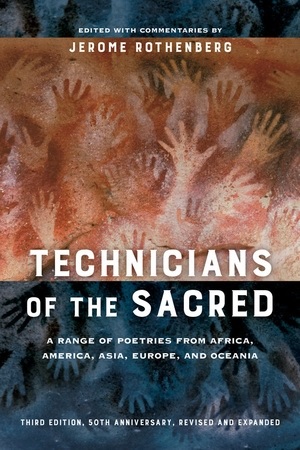 Jerome Rothenberg, a poet, translator, and anthologist "whose efforts to bring English-language readers into contact with creative traditions far outside the Western establishment--a field he called ethnopoetics--had an enormous impact on world literature and made him a hero to rock musicians like Nick Cave, Jim Morrison and Warren Zevon," died April 21 at age 92, the New York Times reported. Rothenberg presented his ethnopoetics concept in 1967 with the book Technicians of the Sacred: A Range of Poetries From Africa, America, Asia, Europe, and Oceania, a wide-ranging anthology that introduced readers to ancient Egyptian coronation events, Comanche peyote songs, and Gabonese death rites.
Jerome Rothenberg, a poet, translator, and anthologist "whose efforts to bring English-language readers into contact with creative traditions far outside the Western establishment--a field he called ethnopoetics--had an enormous impact on world literature and made him a hero to rock musicians like Nick Cave, Jim Morrison and Warren Zevon," died April 21 at age 92, the New York Times reported. Rothenberg presented his ethnopoetics concept in 1967 with the book Technicians of the Sacred: A Range of Poetries From Africa, America, Asia, Europe, and Oceania, a wide-ranging anthology that introduced readers to ancient Egyptian coronation events, Comanche peyote songs, and Gabonese death rites.
He contended that such work "was just as complex and vibrant as the Western canon, if not more so," the Times wrote, noting that Rothenberg went on to deepen his argument in subsequent books, many of them anthologies in which he wove together different traditions--Jewish mysticism, American Indian, Dada--and then connected and contextualized them with extensive commentary.
Technicians of the Sacred found a place on college literature reading lists and has been reissued, with new material, in two later editions. It became a core text for poets and musicians looking to explore ritual and meaning beyond the conventions of their genres. The Doors lead singer Morrison loved the book so much that he was reportedly buried with a copy. When Zevon moved in with his future wife, Technicians of the Sacred was the only book he brought with him.
"For someone always looking for inspiration, they were an incredible resource," Cave said. "I could look and find ideas that worked beautifully in rock 'n' roll."
Rothenberg published several books of his own poetry, including Poland/1931 (1970), Khurbn (1989), and The Burning Babe (2005). He considered translation and anthologizing as creative acts in themselves, believing his anthologies were not an attempt to create a new canon, but were selections meant to highlight hidden connections among seemingly disparate works. He also insisted on performance as a frequent part of what he called "total translation," and late into his 80s he could be found onstage reading, often in venues far removed from the standard poetry recital.
Rachel Berchten, former University of California Press poetry editor and principal production editor, said, "Jerry gave us poetry from all over the world--the originals in diverse languages, over millennia--showing us continuities and disjunctions, traditions and experiments in a rich weaving together of thought, belief, culture, song, ritual, language itself."
At his death, Rothenberg had more titles on the way. In June, Tzadik Records will release In the Shadow of a Mad King, a recording of his poems about Donald Trump. And in October, the University of California Press is publishing The Serpent and the Fire: Poetries of the Americas From Origins to Present, co-written with Javier Taboada. A 50th anniversary edition of Technicians of the Sacred is available in paperback from University of California Press ($34.95).


